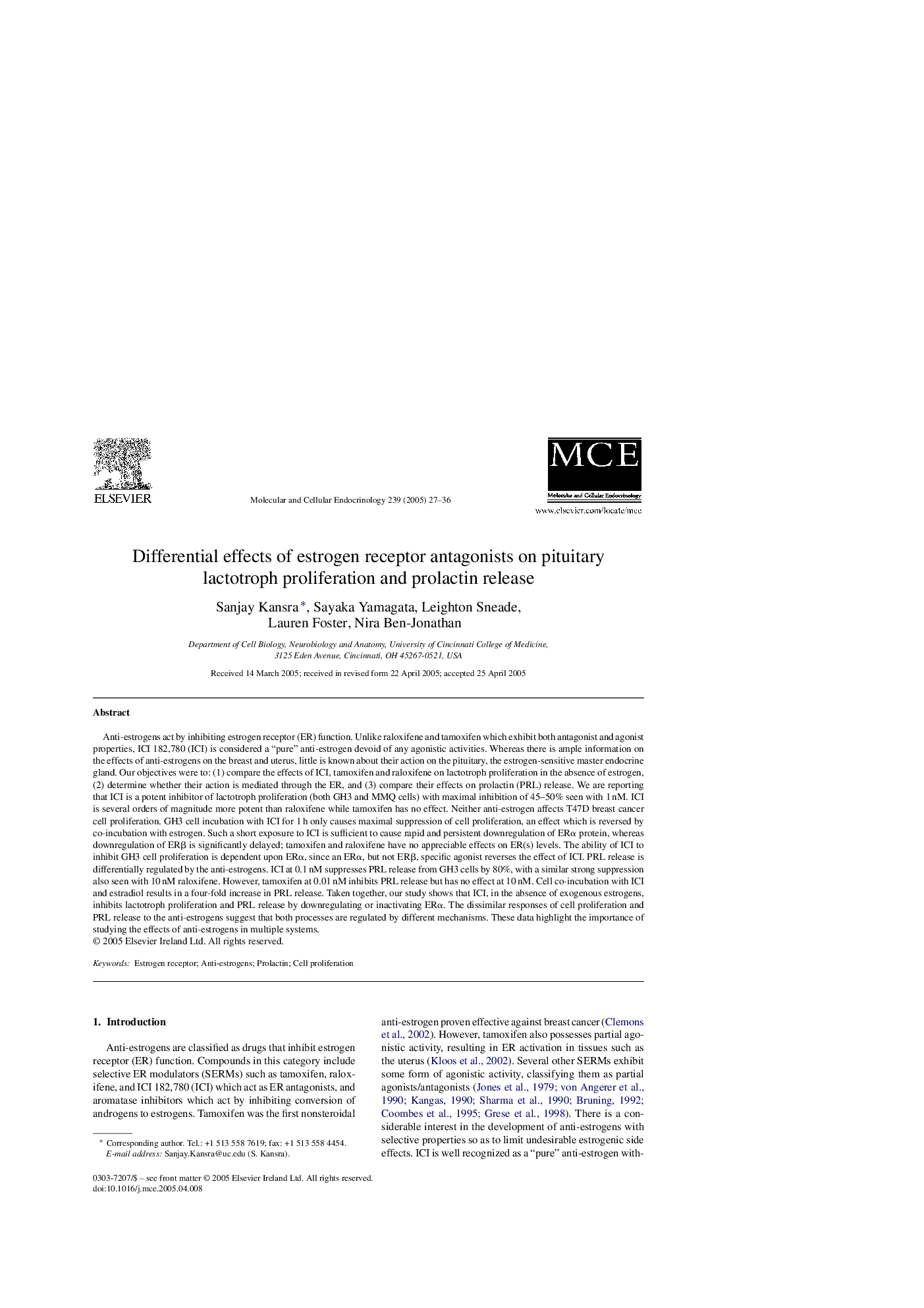| Article ID | Journal | Published Year | Pages | File Type |
|---|---|---|---|---|
| 9914941 | Molecular and Cellular Endocrinology | 2005 | 10 Pages |
Abstract
Anti-estrogens act by inhibiting estrogen receptor (ER) function. Unlike raloxifene and tamoxifen which exhibit both antagonist and agonist properties, ICI 182,780 (ICI) is considered a “pure” anti-estrogen devoid of any agonistic activities. Whereas there is ample information on the effects of anti-estrogens on the breast and uterus, little is known about their action on the pituitary, the estrogen-sensitive master endocrine gland. Our objectives were to: (1) compare the effects of ICI, tamoxifen and raloxifene on lactotroph proliferation in the absence of estrogen, (2) determine whether their action is mediated through the ER, and (3) compare their effects on prolactin (PRL) release. We are reporting that ICI is a potent inhibitor of lactotroph proliferation (both GH3 and MMQ cells) with maximal inhibition of 45-50% seen with 1 nM. ICI is several orders of magnitude more potent than raloxifene while tamoxifen has no effect. Neither anti-estrogen affects T47D breast cancer cell proliferation. GH3 cell incubation with ICI for 1 h only causes maximal suppression of cell proliferation, an effect which is reversed by co-incubation with estrogen. Such a short exposure to ICI is sufficient to cause rapid and persistent downregulation of ERα protein, whereas downregulation of ERβ is significantly delayed; tamoxifen and raloxifene have no appreciable effects on ER(s) levels. The ability of ICI to inhibit GH3 cell proliferation is dependent upon ERα, since an ERα, but not ERβ, specific agonist reverses the effect of ICI. PRL release is differentially regulated by the anti-estrogens. ICI at 0.1 nM suppresses PRL release from GH3 cells by 80%, with a similar strong suppression also seen with 10 nM raloxifene. However, tamoxifen at 0.01 nM inhibits PRL release but has no effect at 10 nM. Cell co-incubation with ICI and estradiol results in a four-fold increase in PRL release. Taken together, our study shows that ICI, in the absence of exogenous estrogens, inhibits lactotroph proliferation and PRL release by downregulating or inactivating ERα. The dissimilar responses of cell proliferation and PRL release to the anti-estrogens suggest that both processes are regulated by different mechanisms. These data highlight the importance of studying the effects of anti-estrogens in multiple systems.
Related Topics
Life Sciences
Biochemistry, Genetics and Molecular Biology
Cell Biology
Authors
Sanjay Kansra, Sayaka Yamagata, Leighton Sneade, Lauren Foster, Nira Ben-Jonathan,
